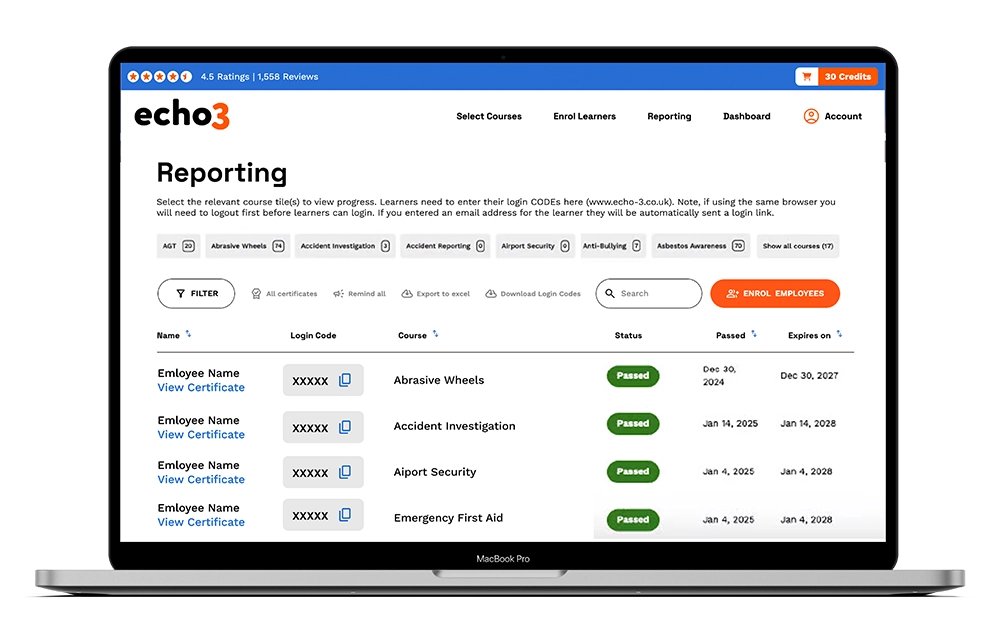Dropped Objects Course
Online dropped objects course providing the knowledge needed to reduce the chance of dropped objects.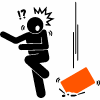
Dropped objects are a significant hazard in many work environments particular in the construction sector and those working at height. The law requires that hazards must be properly controlled which will include staff training.
The Echo3 Dropped Objects course equips participants with essential knowledge to recognising, assessing, and mitigating hazards associated with dropped objects.
Understanding preventive measures, such as proper tool tethering and effective barriers, is vital for creating a safer workplace.
The course emphasises the potential consequences of falling objects, ranging from injuries to damage of equipment and facilities.
By completing the Dropped Objects training, individuals enhance their ability to implement proactive safety measures, creating a safer working environment.
 Course Content
Course Content
The content of the Dropped Objects course include
- What are dropped objects?
- Where do dropped objects occur?
- Dangers from dropped objects.
- Incident Examples
- Dropped Objects Risk Management
- Worksite Design
- Reducing and preventing the impact of dropped objects 7.
- Employer Responsibilities
- Employee responsibilities
Dropped Objects Certificate

Download and Print Your Certificate
- Written in compliance with the XXX Regulations
- Developed by qualified health and safety professionals Accredited by CPD – learn more about CPD here
- Last Updated November 2024
- To gain the certificate you must complete the assessment which involves 20 questions.
- You can access our LMS any time to reprint certificates, check and set pass marks and act as proof of a commitment to ongoing legal compliance.
- The online Dropped Objects certificate is valid for 3 years.
Course Preview
Echo3 courses include engaging motion-graphic video content, with full english subtitles
Reviews
How to Get Certified in 3 Steps
Individual Learners


Benefits for Individuals
-
Engaging video-based content
-
Learner dashboard included
-
Instant access after payment
-
Free course retakes
-
Shareable digital certificate
 QR Code Certificate
QR Code Certificate




Bulk Buying Discounts
What are the objectives of dropped objects training?
 The learning objectives from the Dropped Objects course include
The learning objectives from the Dropped Objects course include
- Understanding the principles of risk assessment for dropped objects.
- Recognise real-world scenarios leading to falling objects.
- Know the potential consequences of falling objects, ranging from injuries to damage of equipment and facilities.
- Greater awareness of securing tools and equipment through proper tethering techniques, utilising barriers or other containment methods.
- promotes skills in identifying and mitigating risks associated with falling objects.
- Equip participants to contribute to a safer work environment by implementing effective measures to prevent dropped objects and minimise the potential for injuries or damage.
What are the dangers from dropped objects?
A dropped object can damage equipment causing structural and environmental damage, which can have serious financial consequences. Even more seriously, a dropped object can injure personnel and cause death.
When an object is dropped, its weight causes it to accelerate downwards. When the object collides with a surface, it exerts a force upon that surface, which can cause damage. This is known as the impact force.
The heavier an object and the greater the height, the more forceful the impact.
Meaning heavier objects dropped from greater heights will cause the most damage on average.
As well as weight and height, the design and shape of an object can affect the type of damage that is caused. Tools with sharp and pointed edges, such as screwdrivers, wrenches and nails, can penetrate on impact and this makes them particularly dangerous so obviously they must never be dropped.
How can you manage the risks from dropped objects?
Dropped Objects Risk Management
The primary focus of risk management for dropped objects, is not on how to catch them, but how to prevent them from falling in the first place. This is known as ‘fall protection’.
There are many ways employers, employees and manufacturers can make use of fall protection.
Obviously, you should always use the safest tools possible when working at height. Tools with additional safety features, such as non-slip handles and head locking mechanisms, can significantly reduce the risk of a dropped object.
When you bring tools to a work site at height, you should carry them in a kitbag or on a belt. A kitbag has the added benefit of freeing up both of your hands.
When you are using tools at height, ensure they are attached to your kitbag or belt, or directly to the workstation. Sockets, extensions and ratchets can be pin locked. This prevents them from falling below the work area.
If you are using a heavy tool, it needs to be specifically risk assessed.
Who needs dropped objects training?
 The Dropped Objects course is recommended for;
The Dropped Objects course is recommended for;
- Construction Workers: Those involved in construction projects where tools and materials are used at height.
- Everyone Working on Elevated Platform.
- Oil and Gas Industry Workers. Employees involved in drilling, extraction, and maintenance activities on oil rigs.
- Warehouse and Logistics Staff. Those working with storage and retrieval systems, loading and unloading materials, or operating cranes.
- Utilities and Telecom Workers. Employees working on utility poles, cell towers, or other elevated structures.
- Transportation Workers. Those involved in loading and unloading cargo, securing loads, or working on elevated platforms.
- Manufacturing Employees. Workers in manufacturing plants where the risk of dropped objects exists.
- Riggers and Scaffolders. Professionals involved in rigging activities or erecting scaffolding.
- Safety Officers and Managers. Individuals responsible for ensuring workplace safety and implementing safety protocols.
- Anyone Working at Height. Individuals who work on ladders, scaffolds, platforms, or any elevated workspaces.
What are employer responsibilities for preventing dropped objects?
On a work site, both you and your employer have shared responsibilities for preventing dropped objects.
Employers should take steps to prevent the fall of objects and to prevent people being struck by dropped objects.
Employers are also required to ensure that nothing is thrown or tipped from height and that employees store all materials securely.
Finally, risk areas should be set up to prevent unauthorised access, and these areas should be clearly marked.
In practical terms, this means that employers must carry out regular inspections and risk assessments, as well as providing equipment and tools are suitable for the job.
Employers must inform also you about the risks and train you in how to control those risks.










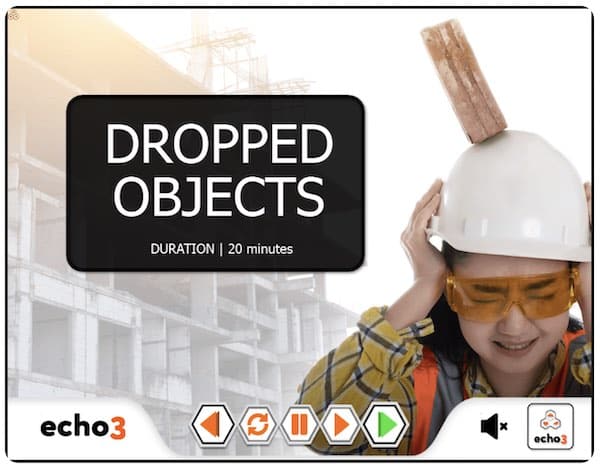
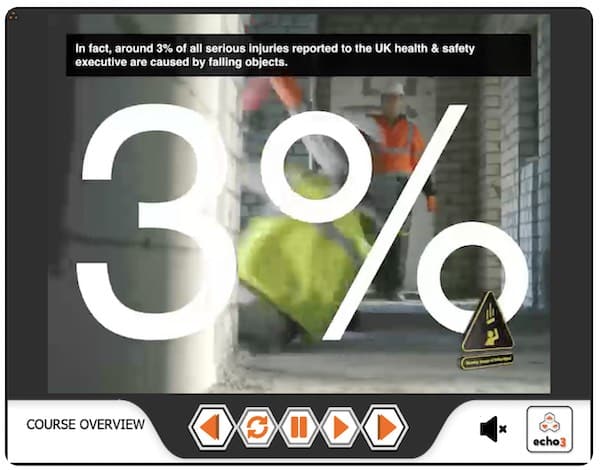
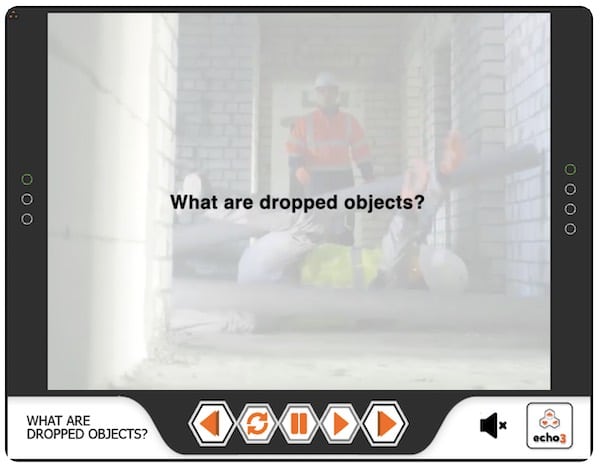
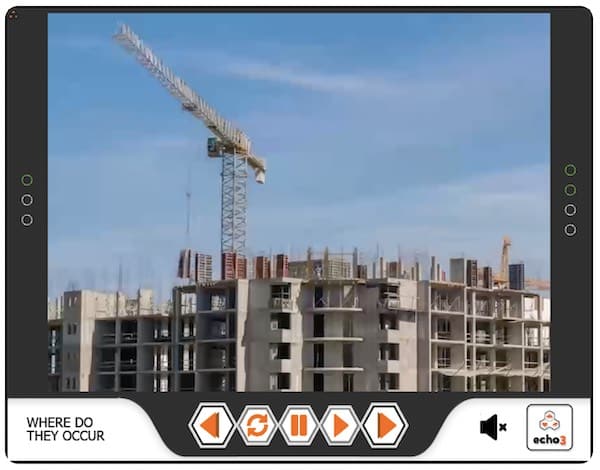
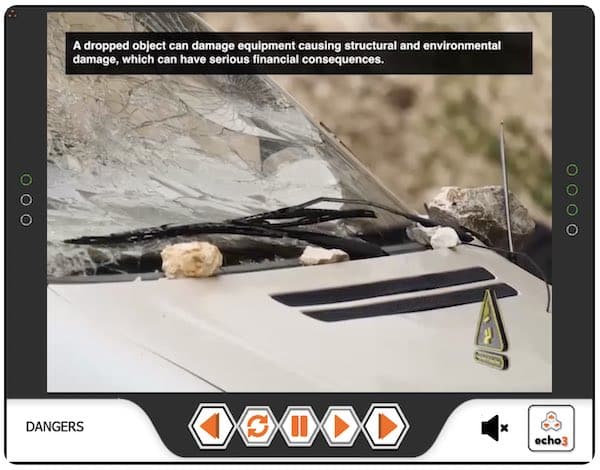

 Course Content
Course Content
